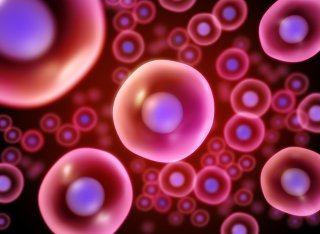
Dr Holly-May Lewis
Academic and research departments
Faculty of Health and Medical Sciences, Section of Chronobiology, Technicians.Publications
Immunoglobulin gene heterogeneity reflects the diversity and focus of the humoral immune response towards different infections, enabling inference of B cell development processes. Detailed compositional and lineage analysis of long read IGH repertoire sequencing, combining examples of pandemic, epidemic and endemic viral infections with control and vaccination samples, demonstrates general responses including increased use of IGHV4-39 in both Zaire Ebolavirus (EBOV) and COVID-19 patient cohorts. We also show unique characteristics absent in Respiratory Syncytial Virus or yellow fever vaccine samples: EBOV survivors show unprecedented high levels of class switching events while COVID-19 repertoires from acute disease appear underdeveloped. Despite the high levels of clonal expansion in COVID-19 IgG1 repertoires there is a striking lack of evidence of germinal centre mutation and selection. Given the differences in COVID-19 morbidity and mortality with age, it is also pertinent that we find significant differences in repertoire characteristics between young and old patients. Our data supports the hypothesis that a primary viral challenge can result in a strong but immature humoral response where failures in selection of the repertoire risk off-target effects.
The global COVID-19 pandemic resulted in widespread harms but also rapid advances in vaccine development, diagnostic testing, and treatment. As the disease moves to endemic status, the need to identify characteristic biomarkers of the disease for diagnostics or therapeutics has lessened, but lessons can still be learned to inform biomarker research in dealing with future pathogens. In this work, we test five sets of research-derived biomarkers against an independent targeted and quantitative Liquid Chromatography-Mass Spectrometry metabolomics dataset to evaluate how robustly these proposed panels would distinguish between COVID-19-positive and negative patients in a hospital setting. We further evaluate a crowdsourced panel comprising the COVID-19 metabolomics biomarkers most commonly mentioned in the literature between 2020 and 2023. The best-performing panel in the independent dataset-measured by F1 score (0.76) and AUROC (0.77)-included nine biomarkers: lactic acid, glutamate, aspartate, phenylalanine, & beta;-alanine, ornithine, arachidonic acid, choline, and hypoxanthine. Panels comprising fewer metabolites performed less well, showing weaker statistical significance in the independent cohort than originally reported in their respective discovery studies. Whilst the studies reviewed here were small and may be subject to confounders, it is desirable that biomarker panels be resilient across cohorts if they are to find use in the clinic, highlighting the importance of assessing the robustness and reproducibility of metabolomics analyses in independent populations.
In this work, we demonstrate the development and first application of nanocapillary sampling followed by analytical flow liquid chromatography–mass spectrometry for single-cell lipidomics. Around 260 lipids were tentatively identified in a single cell, demonstrating remarkable sensitivity. Human pancreatic ductal adenocarcinoma cells (PANC-1) treated with the chemotherapeutic drug gemcitabine can be distinguished from controls solely on the basis of their single-cell lipid profiles. Notably, the relative abundance of LPC(0:0/16:0) was significantly affected in gemcitabine-treated cells, in agreement with previous work in bulk. This work serves as a proof of concept that live cells can be sampled selectively and then characterized using automated and widely available analytical workflows, providing biologically relevant outputs.
ollection of finger sweat is explored here as a rapid and convenient way of monitoring patient adherence to antipsychotic drugs. Finger sweat samples (n = 426) collected from patients receiving treatment with clozapine, quetiapine and olanzapine were analysed by liquid chromatography mass spectrometry, including a subgroup of patients with paired plasma samples. Finger sweat samples were also analysed from a negative control group and patients who had handled antipsychotic medication only. The finger sweat test (based on the detection of parent drug in one donated sample) was 100% effective in monitoring adherence within commonly prescribed dosing ranges. In comparison to participants who handled the medication only, the test could distinguish between contact and administration through monitoring of the drug metabolite, or the level of parent drug. Additionally, in a subgroup of patients prescribed clozapine, a statistically significant correlation was observed between the mass of parent drug in finger sweat and plasma concentration. The finger sweat technology shows promise as a dignified, noninvasive method to monitor treatment adherence in patients taking antipsychotics.

